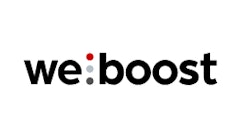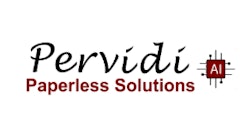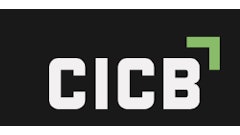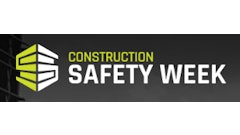
Large scale or “mega” construction projects routinely fail – and sometimes even small and mid-sized projects – costing project owners and governments billions of dollars and sometimes completing years after the expected completion date.
In Toronto, the Eglinton Crosstown LRT is a particularly well known example, running at least five years behind schedule and costing millions more than initially expected.
And yet project leaders and organizations continue to initiate these projects.
The trick is to supersize the risk mitigation along with the project itself. Traditionally, project owners and subcontractors might secure their own insurance coverage, trusting the other stakeholders to take ownership and responsibility for their share. There may be varying limits or different exclusions. There may be situations in which there is no coverage at all.
The best way to up your insurance game is to create a different strategy, minimizing gaps and allowing limiting redundancies in coverage. Enter: The controlled insurance program.
Benefits of a Controlled Insurance Program
With a controlled insurance program, a single party (usually the owner or lead contractor) provides insurance for everyone involved on a construction project for the duration of the project. This means one insurance program covers all major contributors, from project owner to general contractor to a long list of subcontractors, for work they do on the named project.
The benefits are manifold, but the most important include:
- Dedicated project limits/deductibles for one specific project, so project owners don’t need to worry about eroded limits from annual practice policies.
- Uniform coverage across all players, protecting the project as a whole from the risk of varying terms and conditions that might otherwise prove problematic.
- Dedicated costs, or greater transparency of premium costs, which helps project owners and subcontractors to better control their budgets over the course of the project.
- Project Lifetime coverage, protecting all players over multiple years, from inception through completion of the project.
- Decreased administration, leading to lower costs across the board.
- Single point claims handling, simplifying claims processes and leading to faster claim resolution.
- Unified risk management procedures to streamline operations and gain better control over important risks such as safety.
Main Components of a Controlled Insurance Program
On the most basic level, a controlled insurance program is simply a combination of more traditional construction coverages. Each project will come with its own risks, so some project owners will choose to include additional optional coverages via contractual covenants (non-controlled insurance programs), whether it’s automobile liability, professional liability or even contractor equipment insurance.
While there is a certain amount of flexibility in creating the controlled insurance program, the main components include:
1. Wrap-up Liability
A wrap-up liability policy is designed to provide comprehensive liability coverage for all parties involved in the project, including the project owner, general contractors, subcontractors, and sometimes other parties like architects or engineers. A “wrap-up” policy combines coverage for the multiple players by grouping several policies together, and provides coverage for bodily injury, property damage and products and completed operations. This policy seeks to provide broad coverage for all players on a construction project, where a simple general liability policy may leave gaps.
The major question when it comes to the wrap-up policy relates to adequate limits. Individual policies often carry ranges from $1 million or more, but a wrap-up policy will have much higher limits. Owners and contractors will need to look at a variety of factors to determine appropriate limits – including project size, exposures, location, complexity and duration of the project, and contractual obligations, among other risks – and consult with their broker or insurance consultant to determine the right limits for the project.
2. Builders Risk
Builders risk provides protection for the building itself – including materials, equipment and labor – over the course of the project or renovation. It also covers potential expenses incurred as a result of a covered loss, such as additional interest on loans, permits, legal fees, insurance premiums and even rental income not earned because of a delay.
One major risk that falls under this category is water damage claims, which are a significant driver of claims. Water damage is especially concerning because the ripple effects are destructive and complex, and project managers may not be comfortable leaving subcontractors in charge of such a risk.
What’s more, it’s just good risk mitigation practice to set up a complete water damage mitigation plan, identifying potential issues and creating schematics and a complete communication plan to deal with a potential issue. Identifying and detecting water damage before it starts can reduce the frequency and severity of a water incident. Project owners that invest in tools and technology to detect these issues (i.e., automatic shut off valves, moisture sensors) will always come out ahead.
3. Contractors Pollution Liability
The final component of a controlled insurance program is contractor pollution liability coverage. While this coverage was previously often overlooked, it has more recently become more common, as it protects organizations and contractors who are exposed to a pollutant while working on a job site. It covers third-party claims of bodily injury, property damage, and cleanup expenses caused by that pollutant during work at a job site – and even after the job is over.
With increasing awareness of climate change and other environmental concerns comes increasing responsibility for risk and safety. In fact, creating a common standard of quality assurance and safety control is a great way to bring all stakeholders together on a project. Common policies and procedures, especially around safety, let all workers know the team is serious about avoiding accidents and mitigating claims. And a solid prequalification process that shares this information and expectations around qualifying a contractor sends a strong message as well.
For both project owners and contractors, controlled insurance programs can enhance financial resilience by providing a strategic approach to risk management. In an increasingly uncertain world, these programs offer the stability of insurance certainty.
When it comes to a construction projects, preparedness is the key. If each stakeholder is managing risk on their own, the project is doomed to failure. Those with aligned goals, strong risk mitigation strategies and adequate coverage will reach the finish line. And those that run into trouble along the way will be able to manage their claims with ease if their insurance coverage reflects that alignment.


















